6.8 /10 1 Votes
2.6/5 Abandonware DOS Mode Single-player video game | 4.2/5 My Abandonware Initial release date 1982 | |||||||||||||||||||||||||||||||||
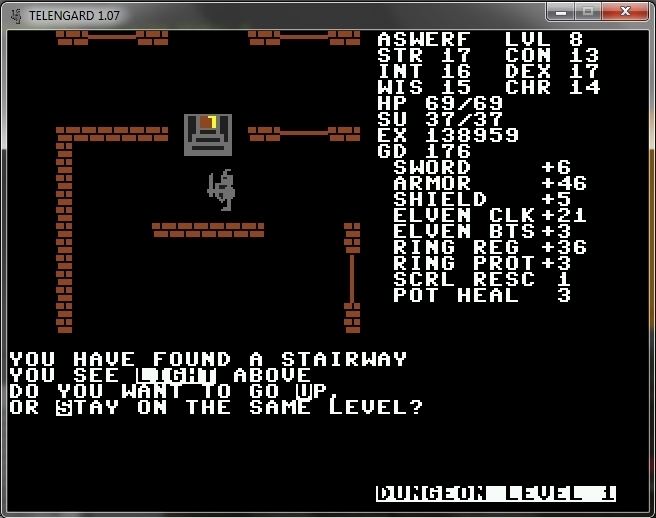 | ||||||||||||||||||||||||||||||||||
Similar Avalon Hill games, Dungeon crawl games, Other games | ||||||||||||||||||||||||||||||||||
How to own telengard without cheating
Telengard is a 1982 role-playing dungeon crawler video game developed by Daniel Lawrence and published by Avalon Hill. The player explores a dungeon, fights monsters with magic, and avoids traps in real time without any set mission other than surviving. Lawrence first wrote the game as DND, a 1976 version of Dungeons & Dragons for the DECsystem-10 mainframe computer. He continued to develop DND at Purdue University as a hobby, rewrote the game for the Commodore PET 2001 after 1978, and ported it to Apple II+, TRS-80, and Atari 800 platforms before Avalon Hill found the game at a convention and licensed it for distribution. Its Commodore 64 release was the most popular. Reviewers noted Telengard's similarity to Dungeons and Dragons. RPG historian Shannon Appelcline noted the game as one of the first professionally produced computer role-playing games, and Gamasutra's Barton considered Telengard consequential in what he deemed "The Silver Age" of computer role-playing games preceding the golden age of the late 1980s. Some of the game's dungeon features, such as altars, fountains, teleportation cubes, and thrones, were adopted by later games such as Tunnels of Doom.
Contents
- How to own telengard without cheating
- Telengard gameplay pc game 1985
- Gameplay
- Development
- Reception and legacy
- References
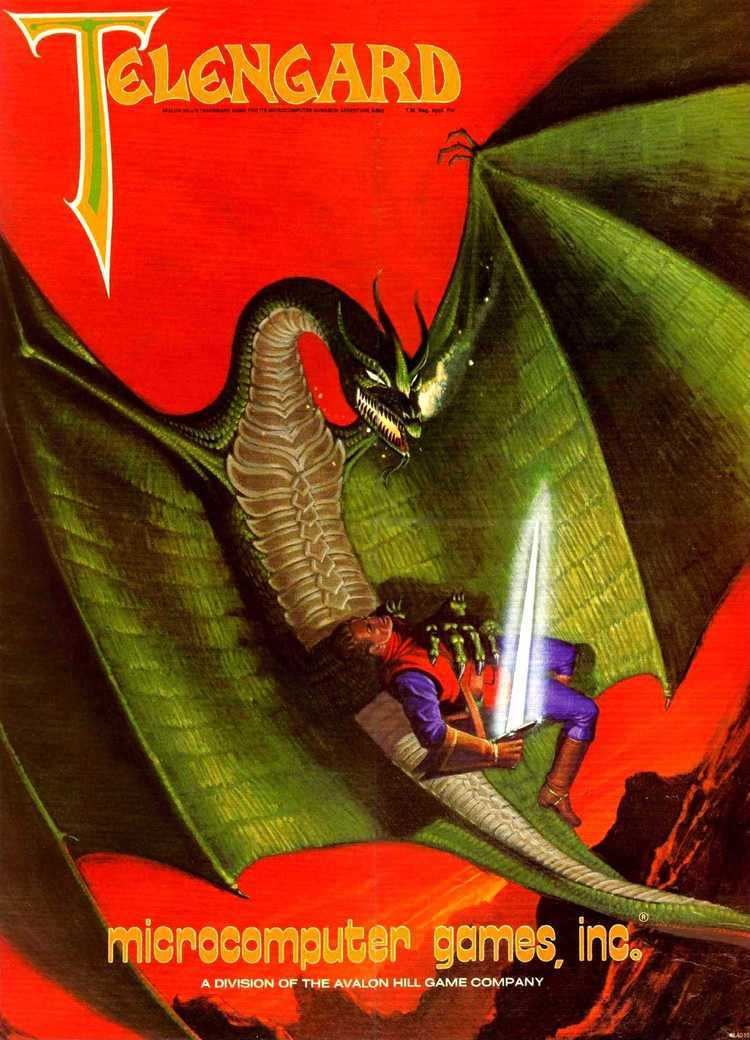
Telengard gameplay pc game 1985
Gameplay
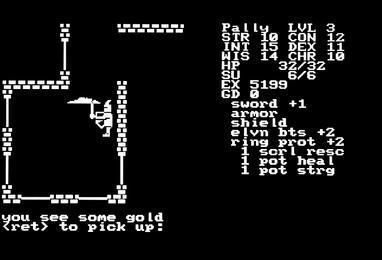
In Telengard, the player travels alone through a dungeon fraught with monsters, traps, and treasures in a manner similar to the original Dungeons & Dragons. The game has 50 levels with two million rooms, 20 monster types, and 36 spells. It has no missions or quests, and its only goal is to survive and improve the player character. The game is set in real time and cannot be paused, so the player must visit an "inn" to save their game progress. In the early releases (e.g., Apple II), the game world has no sound and is represented by ASCII characters, such as slashes for stairs and dollar signs for treasure. Unless the player enters a special cheat, they cannot resume progress upon dying.
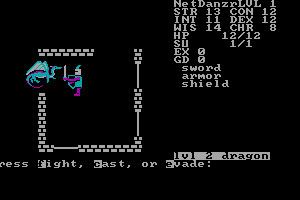
The single-player adventure begins by personalizing a player character. Each character has randomly generated values for their statistical character attributes: charisma, constitution, dexterity, intelligence, strength, and wisdom. While the algorithm stays the same, the player can randomize repeatedly for new character attribute distributions until satisfied. The player begins with a sword, armor, shield, and no money, and can only see his immediate surroundings, rather than the whole level. Monsters spawn randomly, and players have three options in battle: fight, use magic, or evade. Magic includes combative missiles, fireballs, lightning bolts, and turning the undead, as well as health regeneration and trap navigation. The effects of the game's most complex spells are not outlined in the instruction manual and must be learned by trial and error. Like the game, the battle events are carried out in real time instead of in turns. Enemies increase in difficulty as the player progresses through the dungeon. They include both living and undead monsters such as elves, dragons, mummies, and wraiths. Defeating enemies awards experience points, which accrete to raise the player's experience level and increase player stats. The player is rewarded with treasures that include magical weapons, armor items, and potions. Players can code their own features into the game.
Development
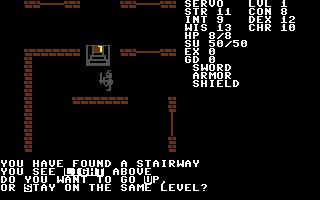
While a computer science student at Purdue University, Daniel Lawrence wrote several hobbyist computer games for the university's PDP-11 RSTS/E mainframe computer, and one grew into Telengard. In his 1976 and 1977 college summers at home, he worked at BOCES in Spencerport, New York, where he wrote a dungeon crawl game called DND (not to be confused with dnd) in the BASIC programming language for the DECsystem-10's TOPS-10 operating system. He had been influenced by the pen and paper Dungeons & Dragons. At college, he ported the game to Purdue's PDP-11 RSTS/E. The game's mechanics grew from conversations at the Purdue engineering building. Part of its "real-time" nature descended from the need to not have players occupy the few shared computer terminals for long.
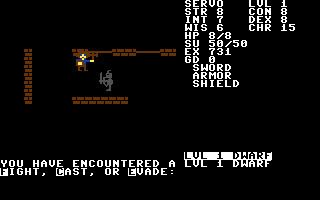
In 1978, Lawrence purchased the Commodore PET 2001 and no longer needed the university's computer. He rewrote DND as Telengard within eight kilobytes of memory. Due to a lack of space, he designed the dungeon to be procedurally generated based on the player-character's position so the maps would not have to be stored in memory. Lack of memory was Lawrence's primary design obstacle. Nevertheless, the final version almost completely used 32 kilobytes of memory. It was easily ported to the Apple II+ and TRS-80 platforms due to their similar usage of the 8K BASIC programming language. The later Atari 800 port required a more complicated handling of string variables. The three ports were finished before Avalon Hill saw the game at a gaming convention and licensed it in 1982 as one of its first computer games. The IBM PC port required a rewrite into the C programming language; the source code for this version was later lost. The Heath/Zenith CP/M version requires MBASIC. The game's most popular port was for the Commodore 64.
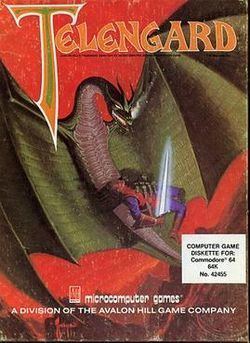
Matt Barton of Gamasutra reported that Lawrence's DND (and consequently, his Telengard) was directly inspired by Whisenhunt and Wood's dnd for PLATO, with its randomized dungeons and minimalist graphics, though Lawrence recalled in an interview that he had not seen or known of their game. Computer Gaming World's Scorpia wrote that Telengard was based on the earlier, public domain software Castle Telengard.
As the game's BASIC source code was available, ports and remaster exist therefore by the fan community.
Reception and legacy
RPG historian Shannon Appelcline identifies Telengard as one of the first professionally produced computer role-playing games. Gamasutra's Barton described the game as a "pure dungeon crawler" for its lack of diversions, and noted its expansive dungeons as a "key selling point". AllGame's Earl Green remarked that the game's mechanics were very similar in practice to Dungeons & Dragons, Computer Gaming World's Dick McGrath also thought the game "borrowed heavily" from the original such that he expected its creators to be thanked in the end credits, and Scorpia cited four specific similarities with Dungeons & Dragons.
Green described the game as both "exceedingly simple ... yet very addictive" and rated it four of five stars. McGrath wrote that he wanted to have more control over his money, and added that a store for purchasing upgrades would have been useful. He thought that games such as Dunjonquest and Maces and Magic handled this aspect better. McGrath suggested that the player draw their own map in the absence of an overview mapping system. He felt that his appreciation for the game grew with time and that it had the necessary hook to make him continually return and play again. Tony Roberts of Compute! considered the Commodore 64 version of the game best for its enhanced graphics. Scorpia in 1993 stated that while Telengard was "interesting for its time, the game would be pretty dated today" compared to the Gold Box games; "back then, however, it was hot stuff, and a fun way of passing the time".
Barton of Gamasutra placed Telengard alongside Wizardry and the early Ultima series in what he deemed "The Silver Age" of computer role-playing games that preceded the golden age of the late 1980s. Yet in 1992, Computer Gaming World's Gerald Graef wrote that Telengard and Temple of Apshai were "quickly overshadowed" by the Wizardry and Ultima series. Some of the game's dungeon features, such as altars, fountains, teleportation cubes, and thrones, were adopted by later games such as Tunnels of Doom. The 1982 Sword of Fargoal similarly shared features. Barton wrote in 2007 that Telengard "still enjoys considerable appreciation today" and questioned whether the Diablo series was "but an updated Telengard".
